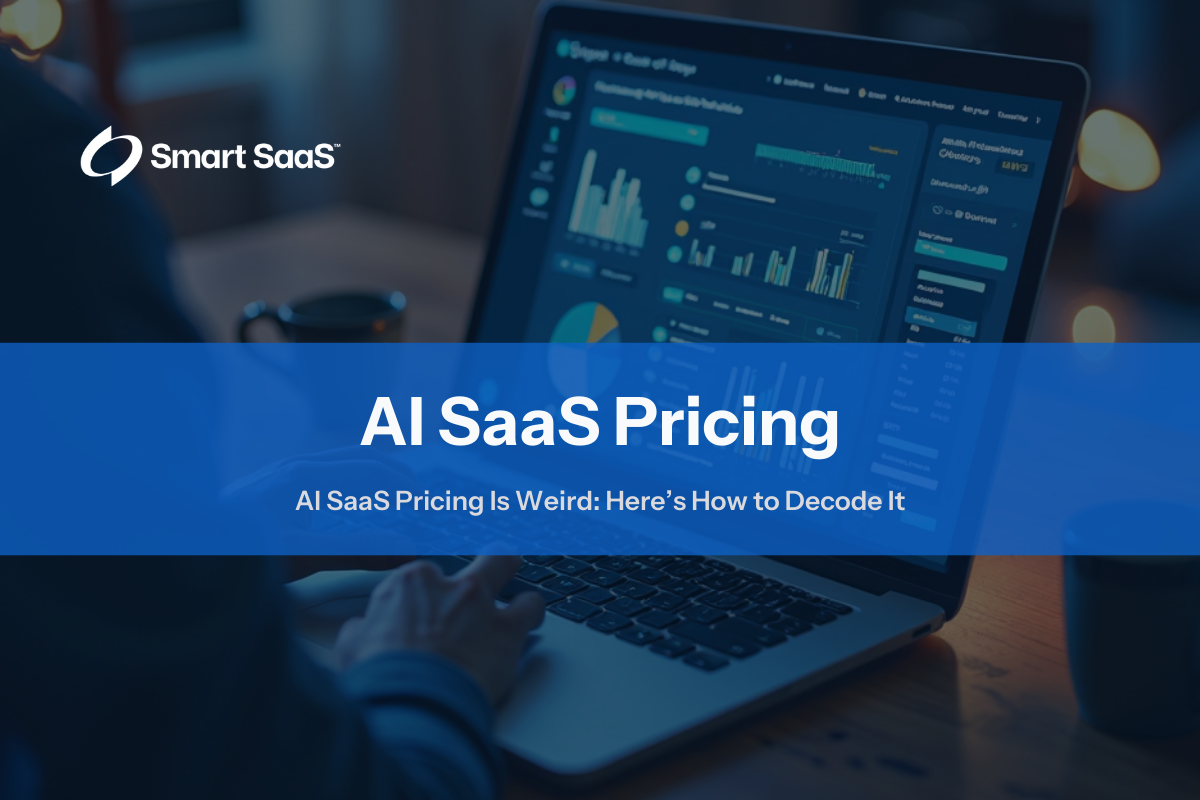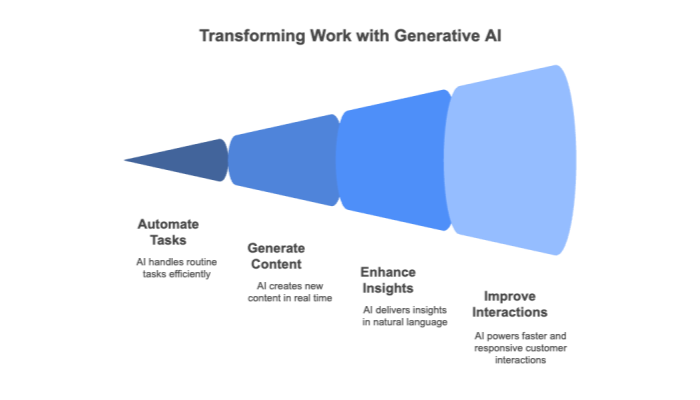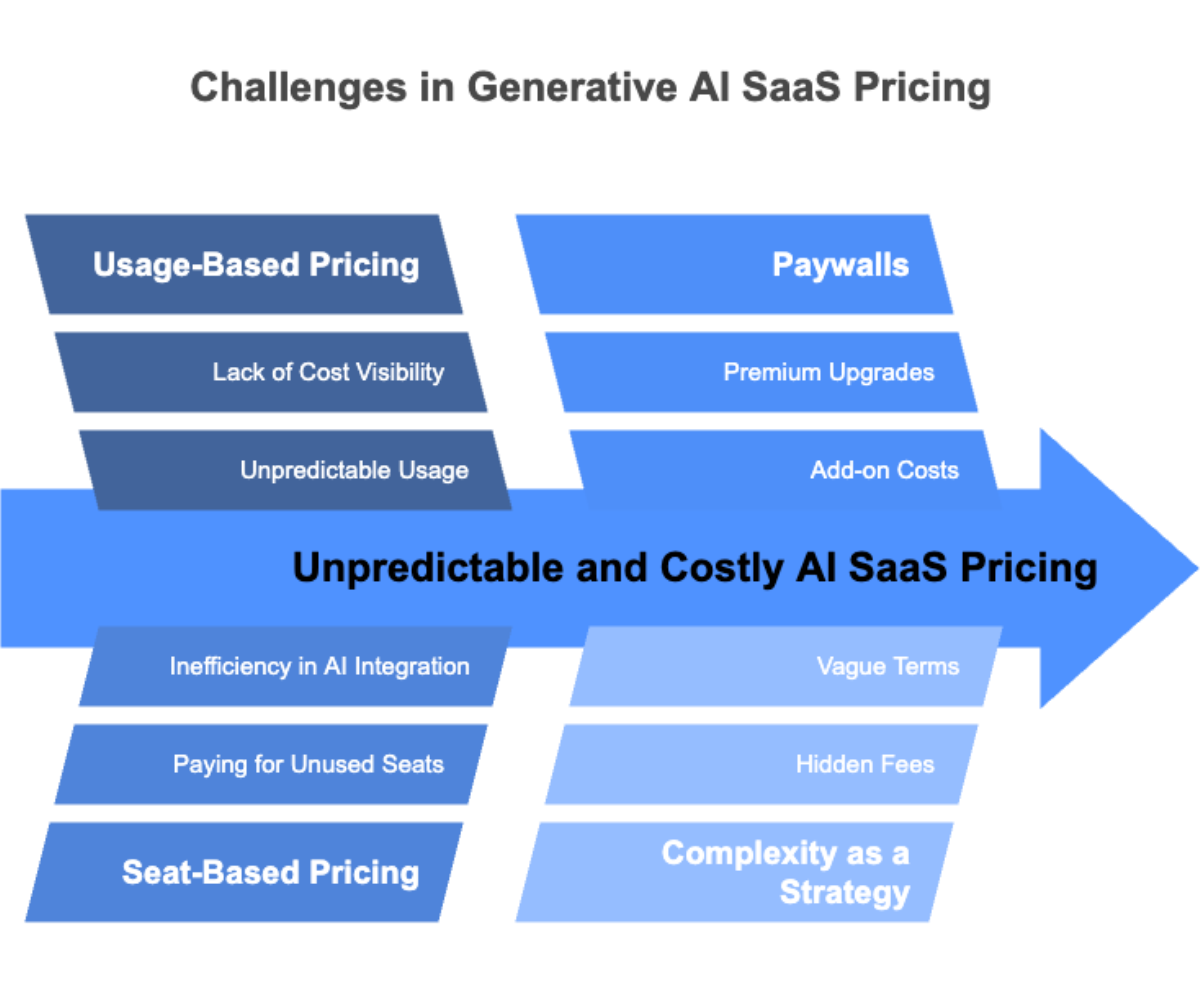

Sunday, April 20, 2025
Josh Cable
Artificial intelligence has piqued the imagination of the business world, propelling digital transformation into a new era. And nowhere is that more evident than in the rise of generative AI (GenAI). SaaS providers are on the cutting edge of incorporating GenAI into everyday business applications. HubSpot, for example, touts the ability of its blog post generator, AI chatbot, and other GenAI-powered tools to help marketers improve their communication and attract more customers. Meanwhile, Microsoft recently unveiled Dragon Copilot, which uses GenAI and natural language voice dictation to automate repetitive tasks for healthcare professionals.
Other SaaS providers that leverage GenAI include Adobe, with its Firefly feature for Photoshop and Illustrator; Canva, which offers a buffet of embedded GenAI apps for creating images, text, and effects; and Salesforce, which billed its Einstein GPT as the world’s first generative AI for CRM software when it debuted. The potential upside of GenAI for business is compelling: streamlined workflows, sharper insights, and scalable creativity, among other benefits. The downside? Even vendors are still trying to wrap their arms around AI SaaS pricing.
That’s because GenAI isn’t cheap to run. Generating on-demand content gobbles up massive computing power. Unlike traditional AI features – which tend to have predictable costs – AI SaaS pricing for GenAI tools is more volatile and can spike unexpectedly. Often, costs are tied to usage metrics such as tokens, characters, or “compute units,” which vary depending on how frequently – and heavily – you use the service.
In this post, we’ll explore how generative AI is disrupting AI SaaS pricing – and what you can do to avoid a “GenAI Surprise” on your next invoice.

Artificial intelligence has been quietly infused in SaaS platforms for years – automating workflows, boosting analytics, and powering smarter customer interactions. But generative AI takes things to the next level.
Instead of just analyzing data or automating tasks, GenAI creates entirely new content in real time: emails, summaries, blog posts, code, even customer replies.
This new wave of intelligence is transforming how teams work:


| Type of AI | What It Does | Common Uses in SaaS |
|---|---|---|
| Generative AI | Creates new content such as text, images, audio, video, or code | AI writing tools, code generation, meeting summaries |
| Machine Learning | Understands and processes human language | Predictive analytics, churn modeling, recommendations |
| Computer Vision | Interprets visual content (images, video) | Document scanning, ID verification, image recognition |
| Natural Language Processing | Understands and processes human language | Sentiment analysis, chatbots, translation tools |
For businesses, the benefits of generative AI are real: faster workflows, more consistent output, and tools that do more of the grunt work – often with less manpower required. But while GenAI can make your team more efficient, it doesn’t necessarily make your pricing any clearer.
In fact, it’s often the opposite. As “Dumb SaaS” providers rush to bolt generative AI onto their platforms without rethinking their pricing models, it’s getting harder to tell what you’re actually paying for – and easier than ever to get blindsided by skyrocketing costs.

While generative AI can unlock new efficiencies for B2B SaaS users, it also introduces a new layer of complexity – and in many cases, a new layer of costs. For businesses, that means AI SaaS pricing models that are harder to predict, harder to budget for, and harder to control. Here’s where the friction shows up:
Many GenAI-powered platforms have opted for usage-based pricing models. Billing might be based on the number of characters generated, tokens processed, or compute units consumed.
It seems simple in theory: The more you use, the more you pay. But in practice, usage isn’t always easy to estimate – especially when different tasks consume different amounts of resources.
A short chatbot interaction might use a handful of tokens, while generating a blog post, sales summary, or support transcript can quickly rack up thousands. Add in automated processes running behind the scenes, and your consumption can quietly snowball into a GenAI Surprise.
Without clear visibility into how your usage correlates to real costs, budgeting becomes guesswork. And without safeguards – such as real-time alerts or spending caps – you might not realize your bill is surging until it’s too late.
That’s the trap: Usage-based models can scale beautifully, but they also introduce unpredictability. And in the world of AI SaaS pricing, unpredictability usually means higher costs.
Generative AI can make teams more efficient. You might not need as many users to produce content, analyze data, or support customers. Yet some SaaS providers still rely on seat-based pricing, charging you as if nothing’s changed.
This means you could be paying for unused seats while AI quietly takes over their workload.
Even when you’re paying for the software, key GenAI features often are gated behind premium upgrades or sold as add-ons. The features you actually need might not be in the plan you signed up for – and the vendor knows it.
You start with a base plan, and before long, you’re paying two to three times more just to access the “AI Assistant” or “Smart Summary” tool that actually makes the product useful.
Some vendors bury GenAI-related pricing in footnotes, FAQs, or separate documentation. You might see vague limits (“fair-use policy”) or undefined terms such as “AI credits.” By the time finance spots the issue, you’re already locked into a contract – or facing an unexpected bill.
This is the modern SaaS Tax: complexity used as cover for creeping costs.
Hidden fees, vague quotas, surprise upgrades – they’re all part of the modern SaaS Tax. Download “The SaaS Tax: How Subscription Software Is Draining Your Profits Every Month” and learn how to spot stealth charges before they blow up your budget. Download your free copy today!


Generative AI holds the potential to revolutionize the SaaS industry, “enhancing productivity by answering questions, solving complex problems, and creating content across multiple domains,” as Roomy Khan explains in a Forbes article.
But that potential comes with a price – and not always a predictable one.
Under the hood, GenAI platforms rely on vast swaths of text, images, and code to generate intelligent responses.
These systems are built on complex models with billions of parameters, fine-tuned through continuous processing of human prompts and behavior. Running them at scale requires significant infrastructure and compute resources – and SaaS vendors are still figuring out how to recoup those costs.
The result? A growing number of platforms are adopting usage-based pricing models tied to variables such as tokens, compute time, and API calls. These costs can fluctuate wildly based on how much you use, when you use it, and even how your prompts are structured – turning budgeting into guesswork.
The good news? You don’t need to be a pricing expert to stay in control. With a few smart strategies, you can avoid surprise fees, regain visibility into your AI usage, and make sure you’re getting real value from your GenAI tools.
AI SaaS pricing models aren’t exactly customer-friendly. And long before the rise of GenAI, SaaS pricing had evolved into a frustrating game of smoke and mirrors. “The SaaS Tax” is a survival guide for the era of runaway software costs. Break free from bloated invoices and reclaim budget clarity. Download your free e-book today!


Generative AI is transforming SaaS – much like SaaS reimagined the traditional software delivery model when it emerged in the early 2000s.
But when it’s in the hands of Dumb SaaS vendors, GenAI becomes a convenient springboard for hidden costs, unpredictable charges, and paywalls cloaked in buzzwords.
There’s a smarter way to leverage artificial intelligence.
With Smart SaaS™, your business can harness the power of generative AI – without sacrificing transparent billing and predictable budgeting.
As the overarching vision for a more customer-centric SaaS industry, Smart SaaS™ provides a fair and flexible framework for integrating AI into software applications.
Fundamentals of the Smart SaaS™ philosophy include:
Ready to take the next step? Check out our free library of SaaS resources and get the insights you need to take control of your software strategy today!

SaaS platforms that integrate artificial intelligence (AI) can deliver incredible productivity gains for business users. But AI SaaS also opens the door to volatile pricing, confusing billing models, and treacherous fine-print traps. In this FAQ, we address common questions about AI pricing – and how to stay one step ahead.
Generative AI enhances SaaS platforms by automating content creation, summarizing insights, streamlining workflows, and improving user interactions through natural language tools. From chatbots to automated reporting, GenAI features boost efficiency and free up time for higher-value tasks.
These benefits can be game-changing – but they often come with usage-based costs that businesses must monitor closely.
Instead of paying a flat monthly fee, customers are billed based on activity – such as tokens consumed, characters generated, or compute power used. This means your costs scale with usage, often unpredictably.
Some platforms offer dashboards or alerts to track usage, but others bury key metrics. Always ask for clear usage thresholds and rate structures.
Evaluate whether pricing is based on queries, indexed pages, API calls, or monthly active users. Some tools charge flat rates with usage caps, while others use tiered or metered pricing.
Also assess transparency. Are terms such as “AI credits” or “fair-use policy” clearly defined? Hidden limits can trigger steep overage fees that derail your budget.
Vendors sometimes lock essential AI tools behind premium plans or add-on fees, forcing you to upgrade to access critical features. Others impose vague usage caps or auto-renewal clauses with built-in price hikes.
Review the fine print before signing. If pricing feels ambiguous, assume the real costs are higher than advertised.
